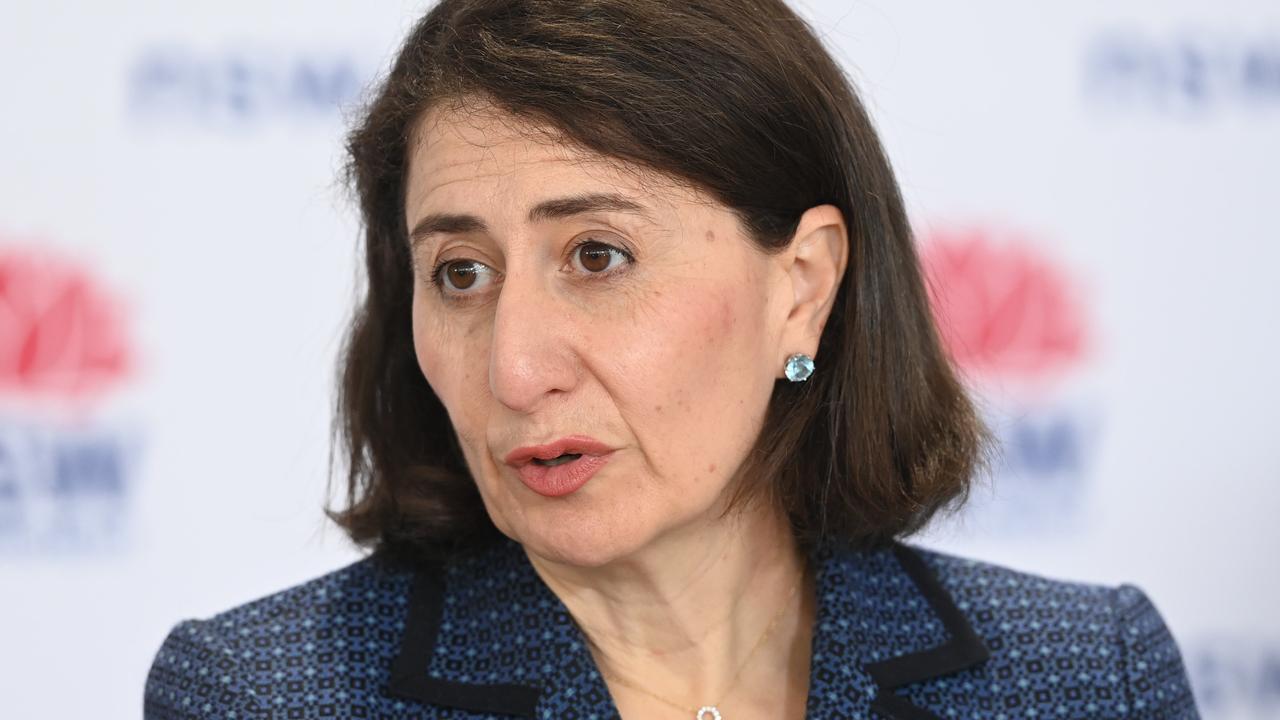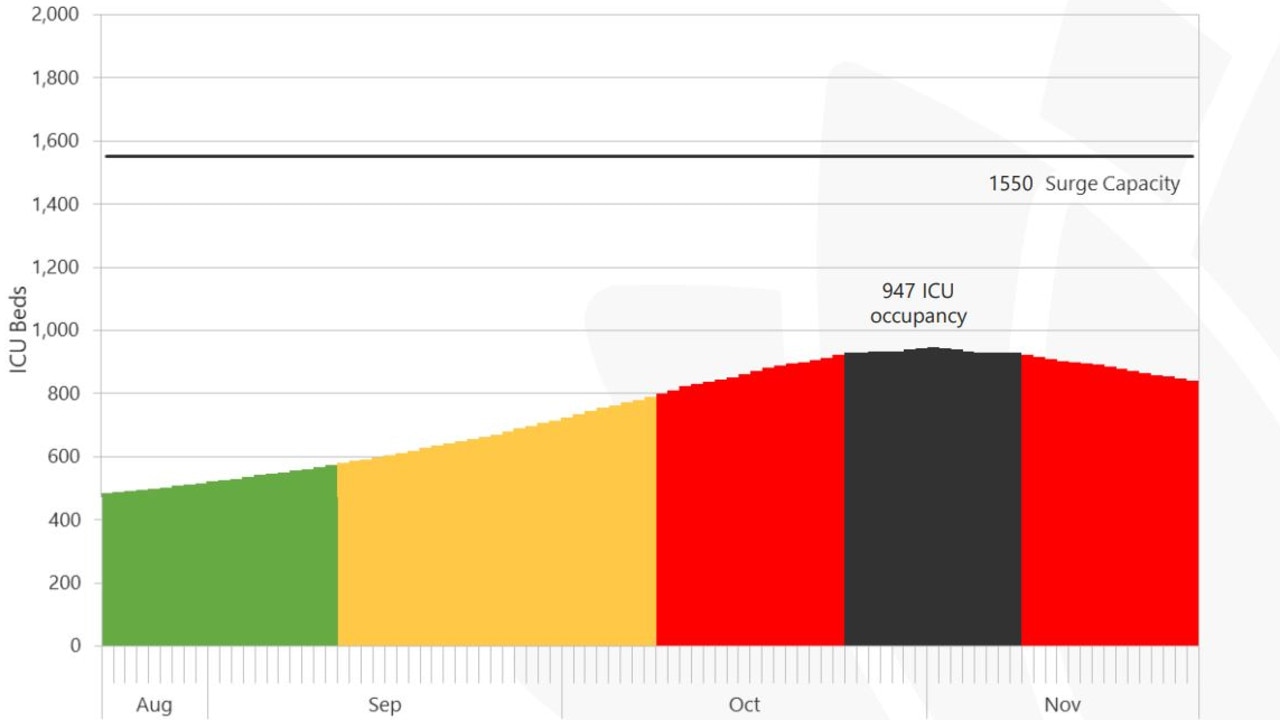NSW braces for surge in Covid-19 hospitalisations by October
NSW officials have revealed their plan to handle the expected surge in Covid-19 ICU cases, predicted to hit the state by next month.
Sydney coronavirus hotspots will see up to 2000 cases per day within the next two weeks, and by the beginning of November, 560 people will be in intensive care units, according to modelling released by the NSW government on Monday.
The modelling, based on analysis by the Burnet Institute, was released as state health officials are bracing for a surge in Covid-19 hospitalisations, expected to hit before the effect of mass vaccination kicks in.
“I can’t emphasise enough how difficult and exhausting this is going to be for our staff,” said Dr Nhi Nguyen, clinical director of the Intensive Care Network NSW.
The modelling released by NSW Health showed the peak just before the beginning of November.
Premier Gladys Berejiklian said the number of Covid-19 patients in ICU was currently 177, while the number of people in intensive care without Covid-19 was usually about 400.
However, surge modelling released on Monday predicts up to 560 admissions from Covid-19 alone by November.

The state has capacity to treat a total of 1550 ICU patients at the same time.
“So just to give people that reassurance, we certainly don't want to have to use all those beds and staff, because we know what pressure that would put on the system,” Ms Berejiklian said.
“But I want everybody to be reassured that the capacity is there.”
The modelling, which was marked with a release date of August 25, shows the state overall is currently experiencing ”minimal” impact on ICU operations.
That‘s projected to change at the weekend, when there will be a “moderate” impact – meaning ICUs will be ”approaching maximal operational capacity”.

By October 9, the surge in Covid-19 cases is expected to have a “severe” impact on ICU operations.
“Overall demand for critical care (will be) exceeding ICU operational capacity”, the modelling predicts.
By the final week of October, ICU operations will experience an “overwhelming” impact, and demand for critical care services will ”significantly” exceed the capacity.
That pressure will persist until the second week of November, when demand on beds will ease a bit and ICU services will experience a “severe” level of impact again.
At the peak around the beginning of November, the modelling predicts 947 people could be in ICU, including those who need treatment for non-Covid reasons.
Four local health districts in Sydney – western Sydney, southwestern Sydney, the Blue Mountains and northern Sydney – have already begun experiencing “moderate” impact.

The majority of the current outbreak’s 29,253 cases have been identified in Sydney’s west and southwest, where a number of local government areas (LGAs) have been singled out as areas “of concern” and put under extra-tough lockdown rules.
“Within the LGAs of concern, cases are expected to continue increasing until mid-September (range of 1,100 to 2,000 per day), when sufficient vaccine-acquired immunity kicks in (alongside maintained restrictions),” the modelling document said.
“A peak in hospital and ICU utilisation will follow. It is anticipated that between 2,200 and 3,900 people will require hospitalisation.”
Dr Nguyen said NSW Health would treat all the state’s ICU beds as part of one big system, moving patients and staff around as needed.
“When you hear stories of patients needing to be diverted elsewhere … that’s actually a sign the system is working,” she said.
NSW recorded 1,281 new locally acquired cases of #COVID19 in the 24 hours to 8pm last night. pic.twitter.com/xtImb5eF8x
— NSW Health (@NSWHealth) September 6, 2021
She said the health team had been updating surge plans since the start of the pandemic and that those preparations helped inform the response to the expected October-November peak.
But the workload for nurses, doctors and paramedics will be intense and many will have to work double shifts to keep up with the demand.
“Everyone is tired. We recognise that, and we check in and make sure everyone's okay,” Dr Nguyen said.
“We’re used to looking after critically ill patients. But our staff – the majority of them – will not be used to seeing the number of patients they’re seeing at the moment, and the numbers that are going to come through the doors.”
On Tuesday, there were 1,071 people with Covid-19 admitted to hospitals in NSW. Out of those, 177 were in intensive care and 67 were on ventilators.



